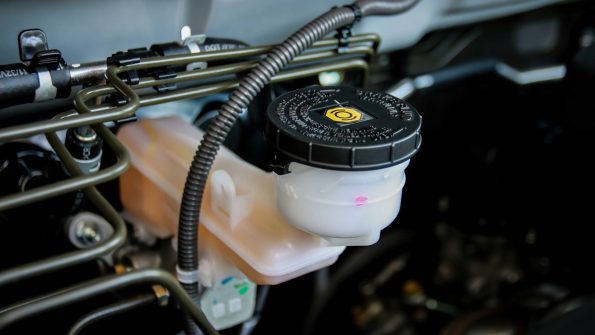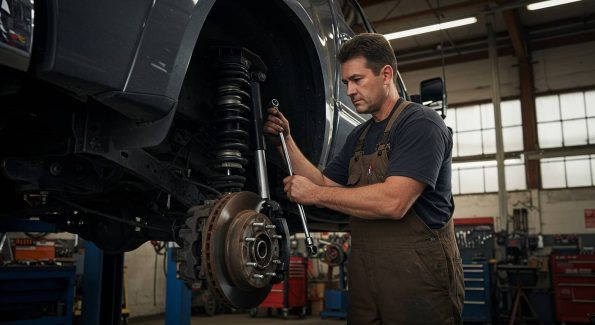Keeping your vehicle in good shape for official inspections is important for safety, following the rules, and making sure your vehicle runs well on Australian roads. Vehicle inspections check if your vehicle is safe to drive and meets all the rules. They help make sure your vehicle won’t be dangerous to you, your passengers, or other people on the road.
Understanding what you need to do before an inspection can help you pass without delays or extra costs. This guide explains how to get your vehicle ready for official inspections in Australia.
Know the Rules
Before your vehicle gets inspected, you need to know what the rules are in Australia. Different states and territories have different rules, and there are also different standards for different types of vehicles and how they’re used.
Basic roadworthiness checks make sure vehicles follow basic safety rules. Commercial vehicles, heavy transport vehicles, and vehicles carrying dangerous materials usually need more thorough inspections. It’s best to check with your local transport authority to find out about current rules.
Braking System Assessment

The braking system is one of the most important safety parts in any vehicle. Before your inspection, check that your brake pads and discs are in good condition and not too worn down. Make sure there are no fluid leaks in the braking system and that everything is adjusted properly.
Also check that your parking brake works well and can hold the vehicle securely when engaged. Fixing any brake problems before the inspection helps you avoid failing and makes your vehicle safer.
Lighting and Electrical Systems

Tyres affect your vehicle’s grip on the road, how it handles, and how well it brakes. Before inspection, check that all tyres have enough tread depth, which should be at least 1.5 mm according to Australian rules. Tyre pressure should match what the manufacturer recommends—you can usually find this information in your vehicle handbook or on a sticker inside the door frame.
Look for any damage like bulges, cracks, or objects stuck in the tyres or between duals that could make them unsafe. Also check that wheels are in good condition and securely attached.
Tyre and Wheel Condition

Tires directly influence vehicle traction, handling characteristics, and braking effectiveness. Pre-inspection checks should confirm adequate tread depth across all tires, typically requiring a minimum of 1.5 mm as per Australian regulations. Tire pressure should conform to manufacturer specifications, which are usually found in the vehicle handbook or on a placard inside the door frame.
Visual inspection must identify any structural damage such as bulges, cracks, or embedded objects that could compromise tire integrity. Proper wheel condition and secure attachment also warrant verification during preparation.
Suspension and Steering Components

Well-maintained suspension and steering help you control your vehicle and make driving more comfortable. Before inspection, look for worn or damaged shock absorbers and suspension parts that could affect vehicle stability.
Check the steering system for too much play or stiffness that might make it hard to control the vehicle. Make sure wheel alignment is correct to prevent uneven tyre wear and ensure the vehicle handles predictably. Fixing suspension and steering problems improves both inspection results and safety.
Engine Performance and Exhaust Systems

A well-running engine ensures good performance and lower emissions, both important for passing vehicle inspections. Before inspection, look for oil leaks, unusual noises, or performance problems that might indicate engine issues.
Check the exhaust system for leaks or excessive emissions that could cause inspection failures. Fluid levels, including engine oil, coolant, and brake fluid, should meet manufacturer specifications. Regular servicing greatly reduces the chance of engine-related inspection failures.
Bodywork and Structural Integrity

The structural integrity of your vehicle directly affects safety in crashes. Before inspection, check for significant rust or damage to the chassis or frame that could weaken the structure. Doors, bonnet, and boot should close securely with working latches.
Windows and mirrors should be clean, properly mounted, and free from cracks or damage that could reduce visibility. Structural problems are serious safety concerns and commonly cause inspection failures.
Have the Right Documentation

Besides the physical condition of your vehicle, you need certain documents during official inspections. Current registration and licensing documents show you’re following the rules. Maintenance and service records show you regularly take care of your vehicle and its safety systems.
Insurance documentation, especially proof of compulsory third-party coverage, is often required during inspection. Vehicles with modifications or those used for special transport operations might need additional certification showing they comply with relevant standards.
Commercial Vehicle Considerations

Commercial vehicles face stricter inspection requirements because they’re used more and have greater public safety implications. Load restraint systems must be able to secure cargo effectively and comply with weight regulations.
Tachographs and logbooks need to be accurately maintained to record driver hours and show compliance with fatigue management regulations. Emergency equipment, including fire extinguishers, first aid kits, and warning triangles, must be present and usable. Commercial operators should pay special attention to these requirements.
Addressing Common Inspection Failures
Understanding and addressing common inspection failures can greatly improve your chances of passing the first time. Worn brake components are a frequent cause of failure, so regularly inspect and replace pads before they wear down too much.
Defective lights often cause inspection failure despite being relatively easy to identify and fix beforehand. Excessive emissions frequently cause problems but can be reduced through regular servicing and using quality fuel. Tyre damage or excessive wear is another common failure point, requiring replacement when signs of wear appear.
Final Preparation
Several final steps can improve inspection outcomes. Thoroughly washing your vehicle makes it easier for inspectors to examine components and systems. Taking a test drive before inspection allows you to identify unusual noises, handling characteristics, or control issues that might indicate problems. A final review of your preparation checklist ensures all potential problem areas have been addressed, maximising your chances of passing the inspection on the first try and minimising disruption.
In Conclusion
Effective preparation for official vehicle inspections includes mechanical assessment, document verification, and administrative organisation. A proactive approach to vehicle maintenance not only ensures you follow the rules but also improves road safety and extends vehicle life.
Following a structured pre-inspection method and promptly fixing identified issues allows vehicle operators to streamline the inspection process and avoid unnecessary complications. Ultimately, regular maintenance practices and following established standards contribute to safer, more efficient transportation systems throughout Australia.
